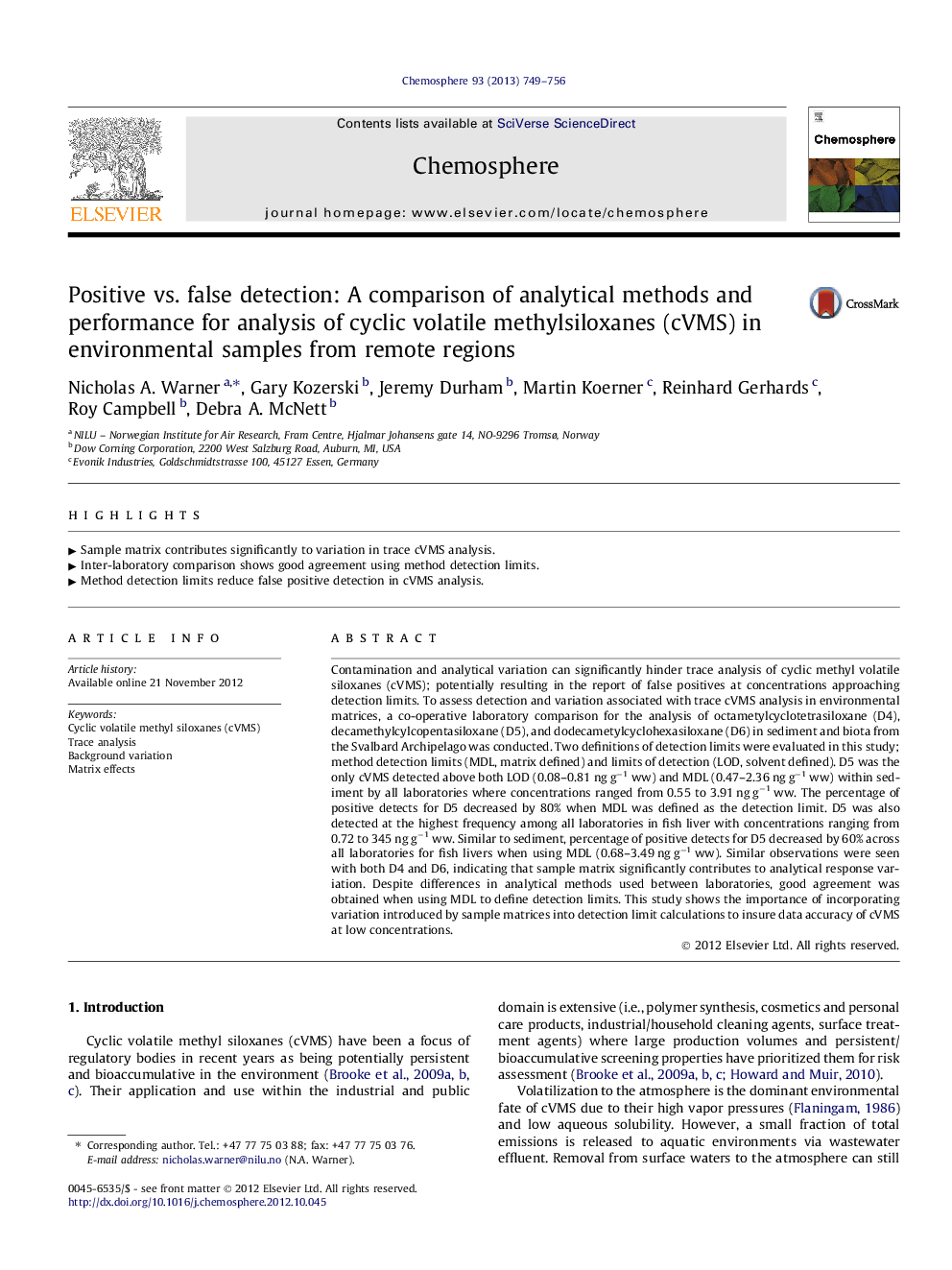| کد مقاله | کد نشریه | سال انتشار | مقاله انگلیسی | نسخه تمام متن |
|---|---|---|---|---|
| 6309695 | 1307454 | 2013 | 8 صفحه PDF | دانلود رایگان |

Contamination and analytical variation can significantly hinder trace analysis of cyclic methyl volatile siloxanes (cVMS); potentially resulting in the report of false positives at concentrations approaching detection limits. To assess detection and variation associated with trace cVMS analysis in environmental matrices, a co-operative laboratory comparison for the analysis of octametylcyclotetrasiloxane (D4), decamethylcylcopentasiloxane (D5), and dodecametylcyclohexasiloxane (D6) in sediment and biota from the Svalbard Archipelago was conducted. Two definitions of detection limits were evaluated in this study; method detection limits (MDL, matrix defined) and limits of detection (LOD, solvent defined). D5 was the only cVMS detected above both LOD (0.08-0.81 ng gâ1 ww) and MDL (0.47-2.36 ng gâ1 ww) within sediment by all laboratories where concentrations ranged from 0.55 to 3.91 ng gâ1 ww. The percentage of positive detects for D5 decreased by 80% when MDL was defined as the detection limit. D5 was also detected at the highest frequency among all laboratories in fish liver with concentrations ranging from 0.72 to 345 ng gâ1 ww. Similar to sediment, percentage of positive detects for D5 decreased by 60% across all laboratories for fish livers when using MDL (0.68-3.49 ng gâ1 ww). Similar observations were seen with both D4 and D6, indicating that sample matrix significantly contributes to analytical response variation. Despite differences in analytical methods used between laboratories, good agreement was obtained when using MDL to define detection limits. This study shows the importance of incorporating variation introduced by sample matrices into detection limit calculations to insure data accuracy of cVMS at low concentrations.
⺠Sample matrix contributes significantly to variation in trace cVMS analysis. ⺠Inter-laboratory comparison shows good agreement using method detection limits. ⺠Method detection limits reduce false positive detection in cVMS analysis.
Journal: Chemosphere - Volume 93, Issue 5, October 2013, Pages 749-756